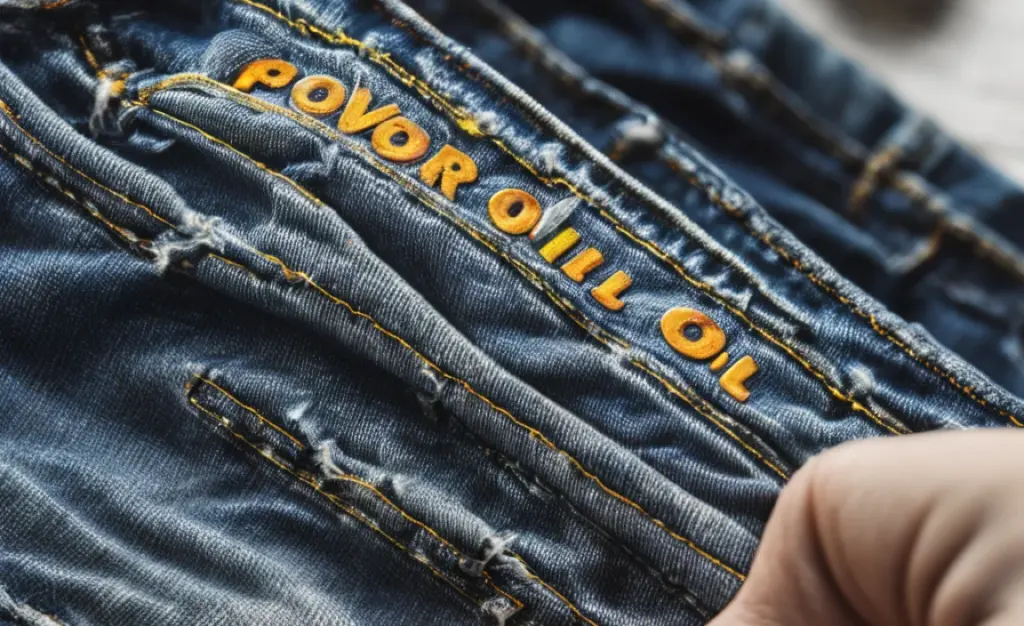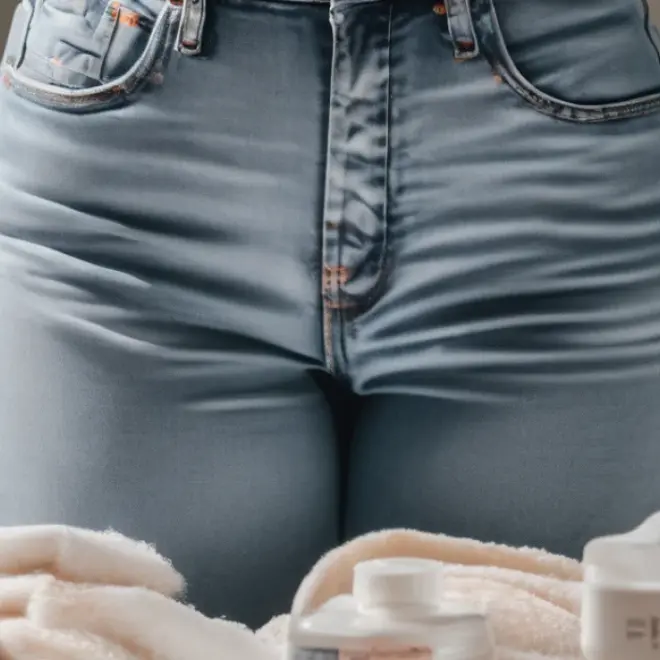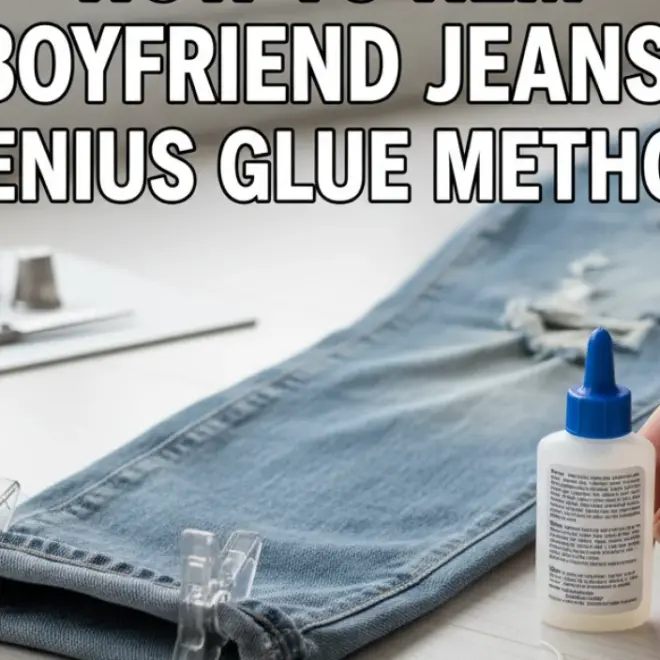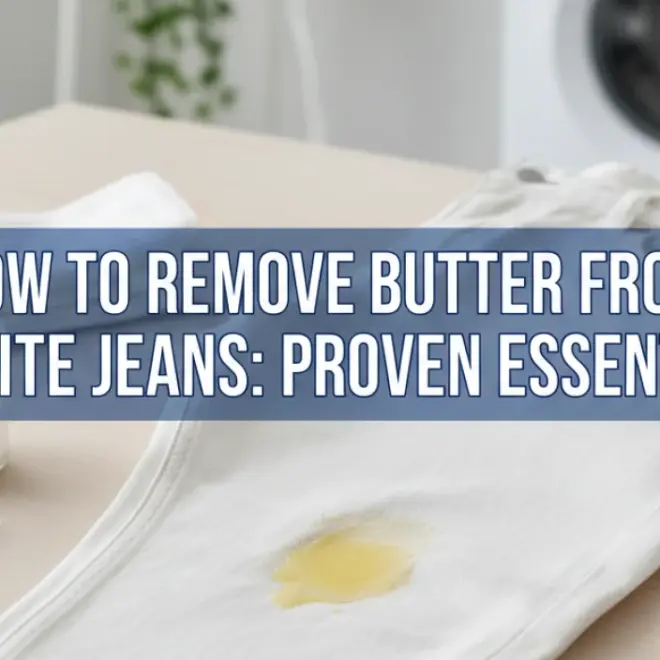To remove motor oil from jeans, act quickly by blotting excess oil, then applying an absorbent like cornstarch or baking soda. Follow with a pre-wash stain remover and wash on the hottest water setting safe for the fabric. Repeat if necessary.
Jeans are a wardrobe staple, perfect for everything from a casual day out to a weekend project. But what happens when you’re working on your car or dealing with a greasy repair, and a fresh stain of motor oil streaks across your favorite denim? It’s a common frustration that can leave you feeling resigned to a permanent mark. Don’t worry, though! With the right approach, you can tackle these tough grease stains and restore your jeans to their former glory. This guide will walk you through simple, effective methods to banish motor oil from your denim, leaving them looking as good as new.
Understanding Motor Oil Stains on Denim
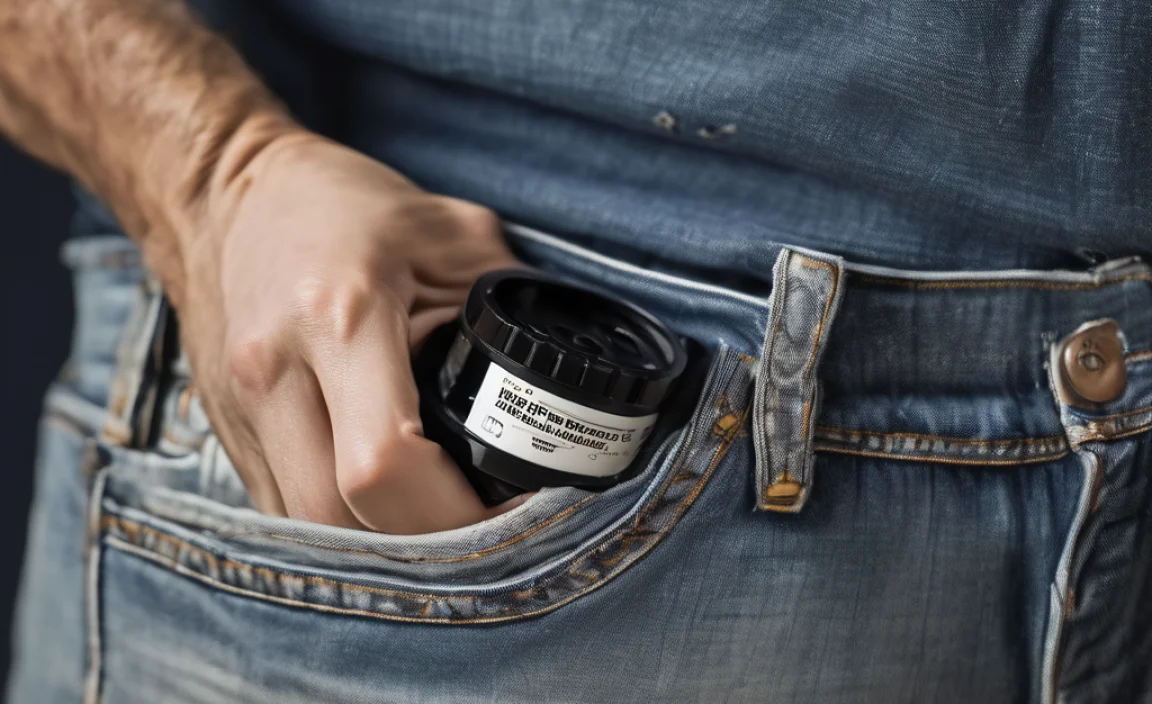
Motor oil is a petroleum-based lubricant, and its composition makes it particularly stubborn on fabric. The oils and other additives in motor oil can penetrate deep into the fibers of your jeans, especially denim, making them hard to lift. Denim, with its twill weave, can also sometimes trap stains. The key to successful removal lies in understanding the nature of the stain and employing strategies that break down the oil without damaging the fabric.
The good news is that while motor oil stains are challenging, they are far from impossible to remove. The effectiveness of any method often depends on how quickly you address the stain and the type of detergent or stain remover you use. For those with sensitive skin or who prefer eco-friendly options, there are also gentle yet effective solutions.
Essential Supplies You’ll Need
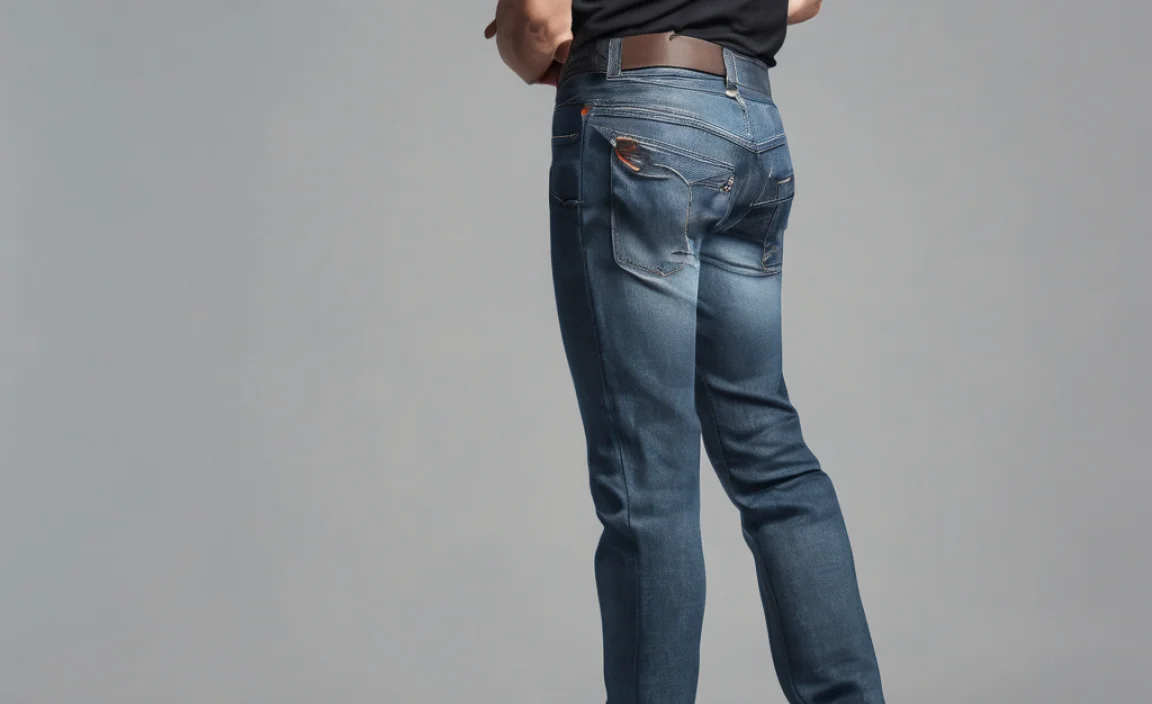
Before you start, gather the following items. Having them ready will make the process smoother and more efficient.
- Paper towels or clean cloths
- Cornstarch, baking soda, or baby powder
- Stiff-bristled brush (like an old toothbrush or scrub brush)
- Liquid laundry detergent or a commercial stain remover
- Gloves (optional, to protect your hands)
- A basin or sink for pre-treating
- Washing machine
- Optional: White vinegar, dish soap (for persistent stains)
Step-by-Step Guide to Removing Motor Oil Stains
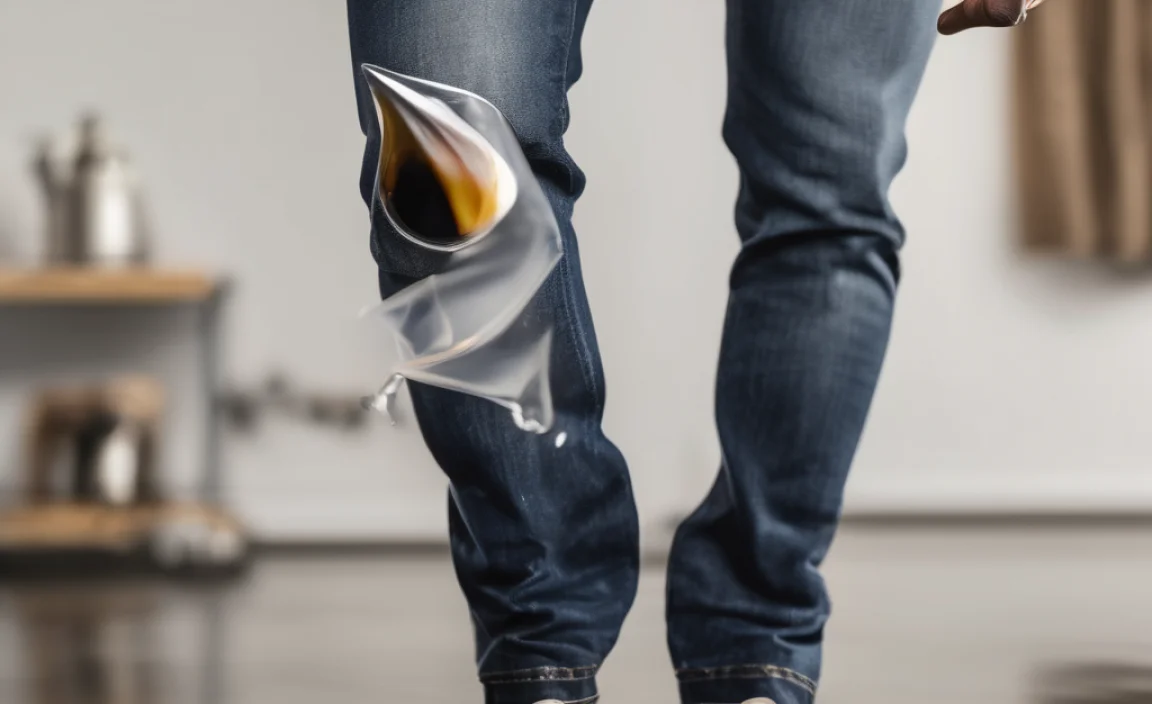
Follow these steps to tackle motor oil stains on your jeans. It’s best to tackle the stain as soon as possible for the highest chance of success.
Step 1: Blot, Don’t Rub
The very first thing to do is to remove as much excess oil as possible. Use clean paper towels or a soft cloth to gently blot the stain. The goal here is to absorb the surface oil without spreading it further into the fabric. Resist the urge to rub, as this will push the oil deeper into the denim fibers.
- Use a dabbing motion.
- Work from the outside of the stain inward to prevent spreading.
- Discard soiled paper towels or cloths immediately.
Step 2: Apply an Absorbent Powder
Once you’ve blotted away the surface oil, it’s time to draw out the oil that has soaked into the fabric. A common household absorbent like cornstarch, baking soda, or even baby powder works wonders. These powders are excellent at soaking up grease.
Generously cover the entire stained area with your chosen powder. You want a thick layer that completely hides the oil stain. Let it sit for at least 30 minutes, but for tougher, older stains, letting it sit for several hours or even overnight can be even more effective.
- Ensure the powder extends slightly beyond the edges of the oil stain.
- For very large stains, you might need a full cup or more of powder.
- Check during this period; if the powder becomes visibly saturated with oil, you can brush it off and apply a fresh layer.
Step 3: Brush Off the Powder
After the absorbent powder has had time to work, it’s time to remove it. Use a stiff-bristled brush or an old toothbrush to gently brush off the powder. You should see that the powder has absorbed a good portion of the oil, often turning clumppy and discolored.
- Use a dry brush to avoid spreading any residual dampness.
- Dispose of the used powder carefully to avoid creating another mess.
Step 4: Pre-Treat the Stain
Now, it’s time to treat the stain directly with a cleaning agent. Apply a strong liquid laundry detergent or a commercial stain remover directly onto the remaining stain. Work it into the fabric with your fingers or the brush.
A good option for this stage is a detergent specifically designed for grease or a heavy-duty stain remover. You can often find these at your local supermarket or hardware store. For particularly stubborn stains, a drop or two of mild dish soap, known for its grease-cutting properties, can also be effective when mixed with your detergent.
- Make sure to cover the entire stained area and slightly beyond.
- Let the detergent or remover sit on the stain for at least 15-30 minutes. For very old or difficult stains, you might let it penetrate for up to an hour.
Step 5: Wash the Jeans
This is the crucial step where the stain is removed. Wash your jeans as you normally would, but with a couple of important considerations:
- Water Temperature: Use the hottest water setting that is safe for your jeans. Check the care label on your jeans for the maximum recommended temperature. Hot water is more effective at breaking down and removing oily residue.
- Detergent: Use your usual high-quality laundry detergent.
- Drying: Crucially, do NOT put your jeans in the dryer until you are absolutely sure the stain is gone. High heat from a dryer can permanently set any remaining stain, making it much harder, if not impossible, to remove later.
If you have a top-loading washing machine, you can also add a small amount of Borax or OxiClean to the wash cycle for an extra cleaning boost, particularly for tough stains. These cleaning agents can enhance the detergent’s ability to lift grease.
Step 6: Inspect and Repeat (If Necessary)
After the washing cycle is complete, take your jeans out and inspect the stained area carefully in good light. If the stain is still visible, even faintly, do not dry them! You will need to repeat the pre-treatment and washing process. Sometimes, motor oil stains are so ingrained that they require multiple treatments. Air dry the jeans until you’re confident the stain is completely gone.
- If the stain persists, try a different stain remover or a more intensive pre-treatment.
- Consider a soak in a solution of hot water and laundry detergent for several hours before re-washing.
Alternative Methods and Tips for Stubborn Stains

Sometimes, a motor oil stain is particularly stubborn. Here are a few alternative approaches and extra tips:
Using Dish Soap as a Degreaser
Dawn dish soap is famously effective at cutting through grease, making it excellent for motor oil stains. Apply a generous amount of liquid dish soap directly to the stain, rub it in gently with your fingers or a brush, let it sit for 15-30 minutes, and then follow with a hot water wash. This is a great option if you don’t have a dedicated stain remover on hand.
White Vinegar Soak
White vinegar can help break down oil. Mix one part white vinegar with one part water. Soak the stained area in this solution for about 30 minutes before proceeding with your regular detergent pre-treatment and washing. Ensure your jeans are washed after this step to remove any lingering vinegar smell.
Commercial Degreasers
For very heavy-duty or old stains, you might consider a specialized automotive or industrial degreaser. These should be used with extreme caution, as they can be harsh. Always test on an inconspicuous area of the jeans first, and wear gloves. Follow the product’s instructions carefully, and ensure thorough rinsing and washing afterward. Reputable automotive stores often carry effective degreasers.
Professional Cleaning
If your jeans are particularly valuable, delicate, or the stain is very old and large, you might consider taking them to a professional dry cleaner who specializes in stain removal. They have access to stronger solvents and professional techniques that can often remove stains that are impossible to tackle at home. Be sure to point out the stain clearly to the cleaner.
What Not to Do

To ensure you don’t make the stain worse, avoid these common mistakes:
- Don’t Rub the Stain: As mentioned, rubbing spreads the oil.
- Don’t Use Bleach on Dark Denim: Chlorine bleach can destroy the color of your jeans and can sometimes react with oil in unpredictable ways.
- Don’t Use Hot Water on Un-pre-treated Stains: While hot water is good for washing, applying it to an untreated oil stain can set it.
- Don’t Put Them in the Dryer Prematurely: This is the biggest mistake to avoid. Always air dry until the stain is gone.
Understanding Different Types of Jeans and Fabrics
The type of denim and any fabric treatments can influence how a stain behaves. Most jeans are made from 100% cotton denim, which is generally robust. However, if you have jeans with:
- Elastane or Spandex: These stretchy fibers are usually blended with cotton. While they can make jeans more comfortable, excessive heat from washing or drying can sometimes damage these synthetic fibers. Always check the care label.
- Special Finishes (e.g., Waxed, Coated): These finishes might be affected by strong degreasers or solvents. It’s best to use gentler methods or consult a professional if your jeans have such coatings.
- Dark Indigo or Raw Denim: These can be prone to color bleeding. While motor oil stains are the primary concern, be mindful of how the cleaning agents might affect the dye. Using a color-safe stain remover is advisable.
For any wash, it’s always a good idea to consult the Federal Trade Commission’s (FTC) guidance on clothing care labels to ensure you’re using the safest methods for your specific garment.
Proactive Measures: Preventing Future Stains
While accidents happen, here are a few tips to help prevent motor oil stains in the first place:
- Clothing Rotation: Designate a specific pair of “work jeans” that you don’t mind getting a little dirty.
- Aprons or Coveralls: If you know you’ll be working with oil or grease, wear a heavy-duty apron or coveralls over your everyday clothes.
- Careful Handling: Be mindful when handling oily parts or containers. Place them on a protected surface.
FAQ: Frequently Asked Questions
Q1: How quickly should I treat a motor oil stain on jeans?
A1: The sooner, the better! Fresh stains are significantly easier to remove than old, set-in ones. Act within a few hours if possible.
Q2: Can I use regular laundry detergent for motor oil?
A2: While regular detergent helps, a heavy-duty liquid laundry detergent or one specifically formulated for grease stains will be more effective. For extra power, you can add a stain remover or a degreasing dish soap.
Q3: Will cornstarch or baking soda ruin my jeans?
A3: No, cornstarch, baking soda, and baby powder are safe for all types of denim. They are natural absorbents that help lift oil without damaging the fabric fibers.
Q4: What if the stain is old and dried?
A4: Old stains are tougher. You might need to repeat the absorbent step for longer (overnight), use a stronger pre-treatment like dish soap or a commercial degreaser, and consider soaking the jeans in hot water with detergent for several hours before washing. Multiple treatments may be necessary.
Q5: Can I use bleach on my blue jeans to remove oil?
A5: It is generally not recommended to use chlorine bleach on colored denim. Bleach can strip the color, leaving a lighter, possibly uneven patch. For white jeans, bleach can be effective, but always test it on an inconspicuous area first.
Q6: How do I know if the stain is completely gone?
A6: Inspect the fabric closely in good natural light. If you can see any trace of discoloration or an oily sheen, the stain is still there. If unsure, air dry and check again. Only dry in a machine dryer once you are certain the stain is gone.
Q7: My jeans are dry-clean only. What should I do about an oil stain?
A7: If your jeans are labeled “dry clean only,” do not attempt to wash them with water and detergent. Instead, blot excess oil, apply an absorbent powder as usual, brush it off, and then take the jeans to a professional dry cleaner. Inform them about the motor oil stain.
Conclusion
Dealing with motor oil stains on your favorite jeans might seem daunting, but with these straightforward methods and a little patience, you can achieve remarkable results. Remember the core principles: act fast, blot instead of rubbing, use an absorbent, pre-treat effectively, and always air dry until you’re positive the stain is history. By following these proven steps, you can confidently restore your denim and keep your wardrobe looking its best, no matter what life throws at it (or spills on it!). Happy stain fighting!


